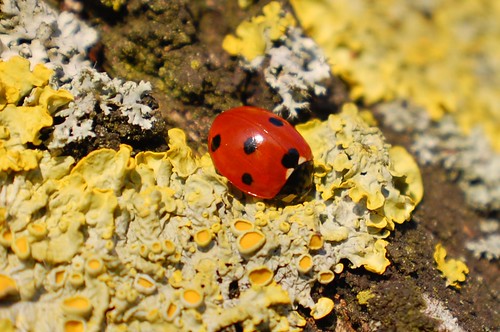How something is named colours our perception, even our experiences
with it – they’re the same thing but the Killer Shrimp is perceived very
differently to Dikerogammerus villosus!
In wildlife, common names have generally been given to those species
which people care about enough to talk about.
Species or groups which are big and colourful, or useful, or dangerous,
or just those which are common enough around people to be seen every day, get
common names – more obscure species get left with just a scientific
binomial. Ladybirds get the common name
treatment: in fact, they’ve got a lot of common names in the British Isles
alone!
.jpg) |
| Ladybird common names in the British Isles |
The now-standard common name – ‘ladybird’ – is an odd one: they’re
definitely not birds, and they’re not all female. ‘Birds’ is the easy one to explain. If you go back far enough, pre-Linnaeus,
names didn’t have quite the zoological precision of today. Anything that lived in water was a fish (have
you ever wondered about crayfish & shellfish?), and everything that flew
was a bird. The little shiny red beetles
did a lot of flying: hence, they were birds.
‘Lady’ is the more interesting bit, and a look at the names for
ladybirds from around Europe shed a bit more light on the reason why. In the pre-insecticide era, infestations of
pests were hugely damaging, and so when aphids were spotted accumulating in the
crops, farmers would pray for help (alongside taking more useful action like
squashing as many as possible). Shortly
afterwards, as the aphid colonies hit their peak, hordes of ladybirds would
descend on the crops, devouring the pests, seemingly in answer to the farmers’
prayers.
.jpg) |
| Ladybird names across Europe |
By far the commonest species would be the 7-spot ladybird, Coccinella septempunctata. Each beetle bore seven black spots, signifying the seven sorrows and
seven joys of Mary, and each was bright orange-red, the colour that Mary was
often depicted wearing (before the Vatican banned her being shown wearing red,
and use of lapis lazuli blue as a high-status colour became standard). Therefore, the tiny predators were thought to
have been a gift sent from the Virgin Mary, and many of the local names
reflected this - ‘The Virgin’s beast’, ‘Mary’s beetle’, ‘Marygold’, ‘Lady-clock’. Others reflected the luck implicit in
receiving a gift from the gods – ‘Lucky beetle’ and the ‘Good luck bug’
